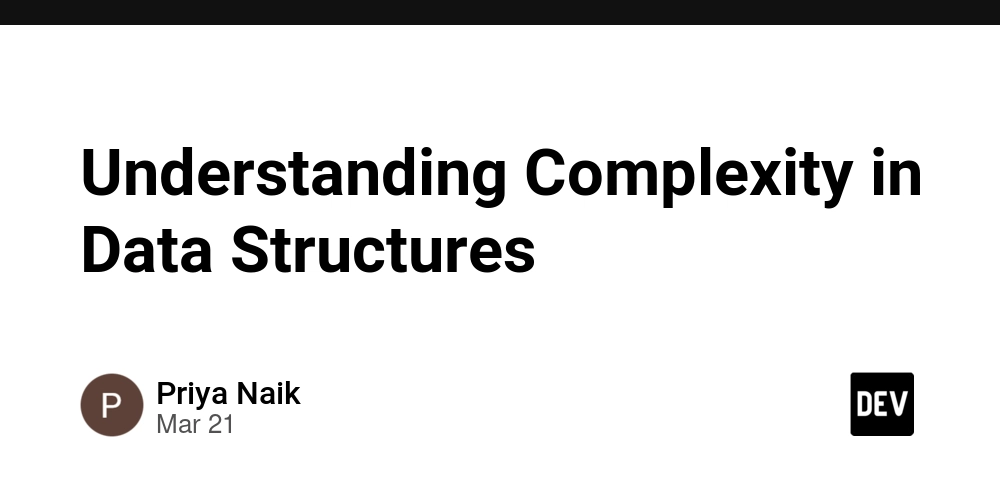Understanding Complexity in Data Structures
When working with data structures, it is important to understand their time and space complexity to ensure efficient algorithm performance. Time complexity measures how the execution time increases with the size of the input, while space complexity analyzes the amount of memory required during execution. The most common time complexities include O(1) for constant time, O(log n) for logarithmic time, O(n) for linear time, and O(n²) for quadratic time. Arrays, linked lists, stacks, queues, hash tables, and trees have different complexities depending on operations like insertion, deletion, and searching. Searching in Data Structure is one of the most common operations, where algorithms such as linear search, binary search, and hash-based lookup are used to find elements efficiently. Linear search operates with a time complexity of O(n), whereas binary search improves efficiency to O(log n) in sorted data. Hashing techniques offer average time complexity of O(1), making them ideal for quick lookups. Understanding the complexity of data structures helps in choosing the right one based on application needs. For example, arrays provide constant-time access but are slow for insertions and deletions, while linked lists excel at dynamic memory allocation but have linear search time. Efficient selection of data structures ensures that applications run smoothly and scale effectively as data grows.

When working with data structures, it is important to understand their time and space complexity to ensure efficient algorithm performance. Time complexity measures how the execution time increases with the size of the input, while space complexity analyzes the amount of memory required during execution. The most common time complexities include O(1) for constant time, O(log n) for logarithmic time, O(n) for linear time, and O(n²) for quadratic time. Arrays, linked lists, stacks, queues, hash tables, and trees have different complexities depending on operations like insertion, deletion, and searching.
Searching in Data Structure is one of the most common operations, where algorithms such as linear search, binary search, and hash-based lookup are used to find elements efficiently. Linear search operates with a time complexity of O(n), whereas binary search improves efficiency to O(log n) in sorted data. Hashing techniques offer average time complexity of O(1), making them ideal for quick lookups.
Understanding the complexity of data structures helps in choosing the right one based on application needs. For example, arrays provide constant-time access but are slow for insertions and deletions, while linked lists excel at dynamic memory allocation but have linear search time. Efficient selection of data structures ensures that applications run smoothly and scale effectively as data grows.












































































































































































![[The AI Show Episode 142]: ChatGPT’s New Image Generator, Studio Ghibli Craze and Backlash, Gemini 2.5, OpenAI Academy, 4o Updates, Vibe Marketing & xAI Acquires X](https://www.marketingaiinstitute.com/hubfs/ep%20142%20cover.png)



























































































































![[DEALS] The Premium Learn to Code Certification Bundle (97% off) & Other Deals Up To 98% Off – Offers End Soon!](https://www.javacodegeeks.com/wp-content/uploads/2012/12/jcg-logo.jpg)


![From drop-out to software architect with Jason Lengstorf [Podcast #167]](https://cdn.hashnode.com/res/hashnode/image/upload/v1743796461357/f3d19cd7-e6f5-4d7c-8bfc-eb974bc8da68.png?#)








































































































.png?#)

































_Christophe_Coat_Alamy.jpg?#)
 (1).webp?#)





































































































![Apple Considers Delaying Smart Home Hub Until 2026 [Gurman]](https://www.iclarified.com/images/news/96946/96946/96946-640.jpg)
![iPhone 17 Pro Won't Feature Two-Toned Back [Gurman]](https://www.iclarified.com/images/news/96944/96944/96944-640.jpg)
![Tariffs Threaten Apple's $999 iPhone Price Point in the U.S. [Gurman]](https://www.iclarified.com/images/news/96943/96943/96943-640.jpg)




































































































































